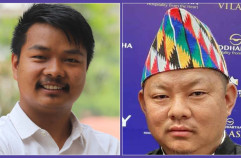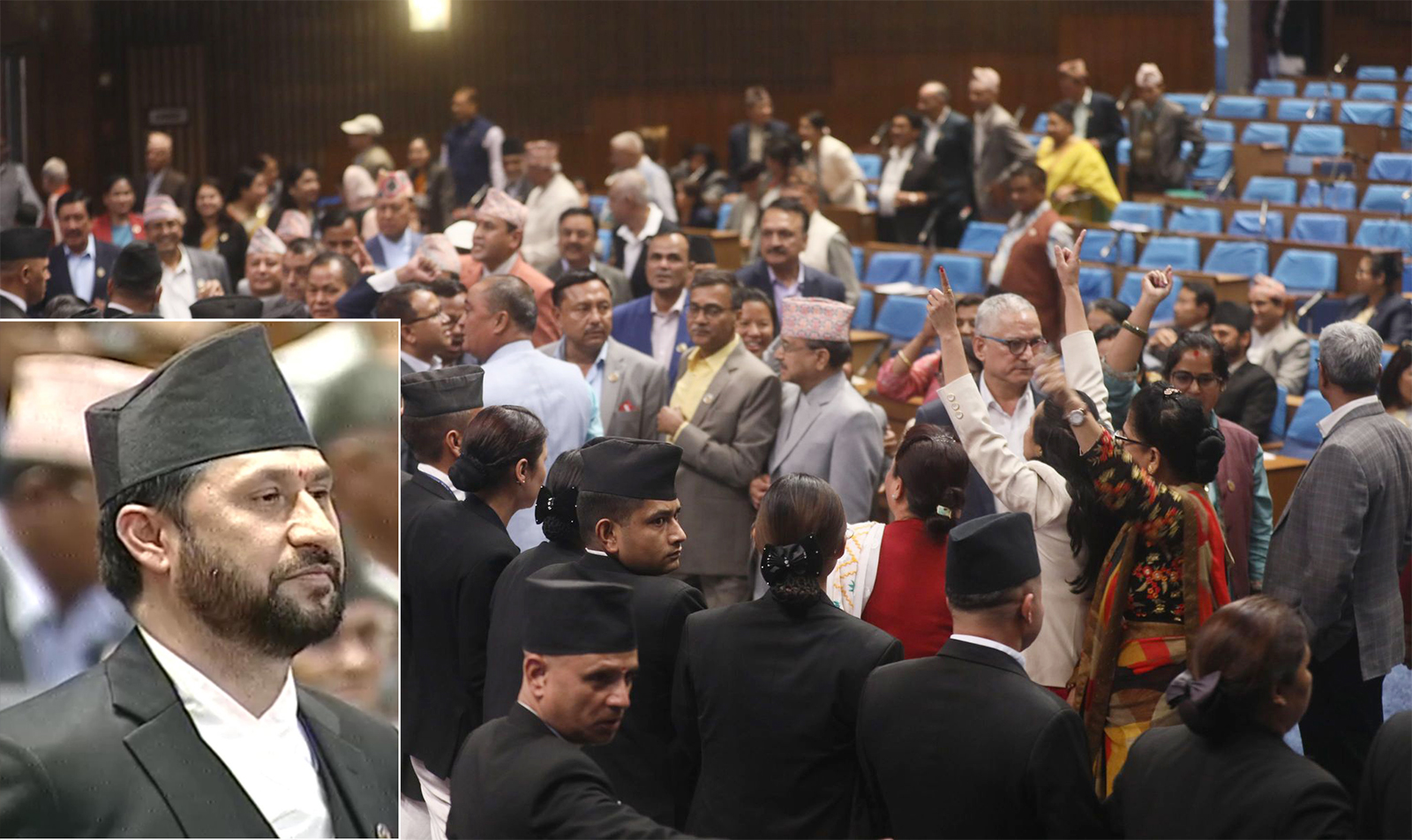Media as a Mirror of Inclusivity
We use Google Cloud Translation Services. Google requires we provide the following disclaimer relating to use of this service:
This service may contain translations powered by Google. Google disclaims all warranties related to the translations, expressed or implied, including any warranties of accuracy, reliability, and any implied warranties of merchantability, fitness for a particular purpose, and noninfringement.


The fourth part keeps questioning whether the constitution has been implemented/not, laws have been implemented/not. How inclusive is the journalism itself, which keeps raising its finger on the question of inclusion and equality? Has Nepal's media fully practiced inclusiveness?



Journalist Taramani Sapkota has opened the door of debate through the book 'Massanchar and Inclusive Journalism'. Based on the inclusive provision in the constitution, the book has analyzed the participation of the oppressed castes, classes and communities in the government and private media.
Freedom of press and expression was controlled during the Panchayat period. Only after the political change of 2046, the Nepali press got the opportunity to adopt a professional path. It is well known that the journey of professional journalism began after the Constitution of the Kingdom of Nepal 2047 guaranteed freedom of press and expression. After full press freedom was ensured in the preamble of the new constitution of 2072, the sky of journalism became more open.
Article 283 of the Constitution mentions that 'appointments to the positions of constitutional organs and bodies shall be made on the principle of inclusiveness'. Media related bodies like Press Council Nepal, Department of Information and Broadcasting, Minimum Wage Determination Committee do not have an inclusive character. There is no sign of inclusiveness in the Gorkhapatra Institute of National Communication, Radio Nepal, National News Committee, Nepal Television etc. The author has collected facts from various agencies and tried to make it official about the presence of tribal tribes, Madhesi, women, Muslims, Dalits, minorities, marginalized and endangered communities in journalism. According to the Constitution, National Media Policy 2073, inclusive democracy values, norms and principles, constitutional and legal commissions, media, professional associations of journalists, and even produced materials have been studied in the book.
Many debates were held for the rights of tribals, tribes, Madhesi, women, Muslims, Dalits and other communities during the drafting of the constitution. Various caste and gender organizations lobbied for newsrooms, produced materials and other issues in the media as well. But the media could not practice enough in the practice accordingly.
Although Nepal is a diverse country, inclusive presence of oppressed castes, classes and communities in the newsroom is weak. The National Mass Media Policy 2073 has emphasized inclusiveness in the media. Objective 1.5 of the policy mentions "to increase the representation of women, Dalits, tribals, disabled, Madhesi, marginalized communities and backward areas, classes and communities in the field of mass media and encourage them to be active". However, there is no need to hesitate to say that the mainstream media could not be inclusive.
The author has analyzed the state of inclusiveness with data from government media as well. The number of journalists working in the Gorkhapatra Institute is dominated by journalists from the Khasarya community, while the number of Muslims and Dalits is less compared to Madhesi, women. Similarly, the condition of Radio Nepal, which is broadcasting news and inclusive programs in 21 languages, is similar to that of Gorkhapatra. The number of Khasaryas is high, the participation of tribals is low. The author has analyzed the journalists working in Nepal Television, which broadcasts news content in 9 languages, until July 2078. Out of 34 people in the editing group, Khasarya is 18 people. Although there are 5 tribal tribes, all of them are hilly. There are 1 Madhesi and 10 women. There is no participation from the Dalit and Muslim communities at the editorial level. In seeking inclusion in
private media, the author has reached out to four major dailies. Kantipur, Nagarik, Annapurna and Naya Patrika have been made to publish material related to tribals. Khasarya's predominance is also seen in the leading role of online, which came as new media. The author has given the details of the online editors who submitted their posts till Chait 11, 2078. Of the 582 online publications registered with the Department of Information and Broadcasting, there are 431 male editors and 151 female editors. Khasary leadership in both is 70.61 percent. The number of hills is also high among tribals. The situation of inclusiveness even in awards and honors distributed in the
journalism field is remarkable. He has also discussed the politicization, controversies and activities against norms in the awards. The reality of the society is reflected in the media. However, drawing the conclusion that our journalism has not been able to address the plurality of the society, Sapkota writes, 'The main problem of the Nepali media world is the inability to develop an inclusive media system compatible with the constitution. The development of such a system involves the inclusion of newsroom and broadcast-broadcast content. This creates an environment for advocating the rights and identity of oppressed castes, classes and communities.
The author has presented his conclusions about the controversy over who is the founder of the Federation of Journalists. The Nepal Journalists Association, formed under the chairmanship of Krishna Prasad Bhattarai on 16th Chait 2012, has been considered as the founding committee by the Federation of Nepal Journalists. The union was transformed into a federation by the amendment of the 2053 constitution of the union. Although the federation considers the association formed in 2012 as the official founder, the Nepal Journalist Association was formed in 2008 with Satyanarayana Bahadur Shrestha as the president and Bhoj Bahadur Singh Neupane as the secretary.
Nepal Tribal Journalists Association (FONIZ) including tribal journalists' organizations have been demanding to correct the misinterpretation of history. Based on the facts, this dispute has not been resolved by the one-sided claim that Krishna Prasad Bhattarai is the founder of the federation. The period of both Shrestha and Bhattarai as chairman seems to be about one year. However, Shrestha's activism is more visible than Bhattarai's. Therefore, even if activism is to be considered as the basis, Shrestha should be considered as the founder. The activities of organizations such as Phonies, Madhesi Journalists Association, Rashtriya Dalit Journalists Association, and Sancharika Group, which insist that the media sector should also be run according to inclusive principles, should be considered positive.
Studying the inclusiveness in the communication sector according to the constitution, the author has envisaged an inclusive communication system. The author says that the book has been prepared from an anthropological and journalistic point of view for the purpose of implementing the inclusive rights of the Constitution in the field of communication. If the rights are recorded in the document, the constitution will not be implemented. The role of the media is also important in that. The entire communication sector needs to be transformed to make media and organization leadership, newsrooms, production and publishing-broadcast content based on inclusive principles. Along with this, the book also provides guidelines for making the media inclusive.
In some places, the principles of inclusiveness and its context have been repeated. Hasty publishing of books or lack of quick editing. The author seems to have paid attention to this in the Amagi version. However, the book will be an important resource for scholars who want to understand the state of inclusion in mass media. It has become a collectible for journalists, journalism students and even media organizations.
प्रकाशित : चैत्र ८, २०८० १८:४१
















